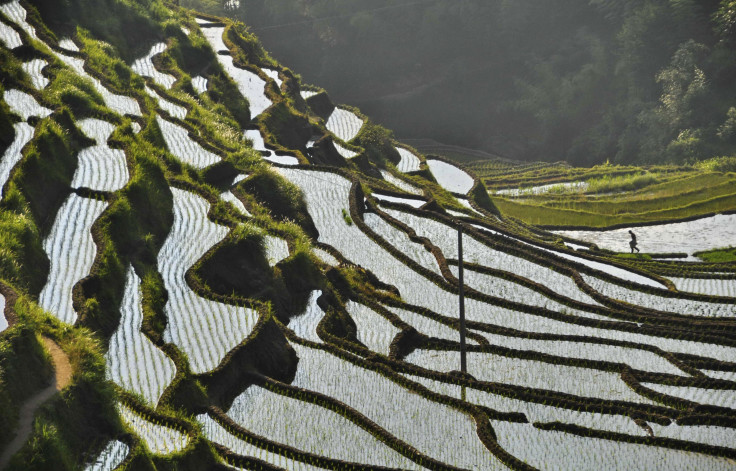China's Food Challenge: Demand Rises As The Nation Becomes Wealthier, While Domestic Supply Dwindles

China is having trouble feeding its 1.35 billion people. As the nation underwent rapid industrialization and urbanization in recent years, its productive farmlands have dwindled, reducing its domestic food supply, while at the same time rising incomes have boosted demand. As a result, China has had to import an unprecedented amount of food, which may drive up global food prices soon.
With the Chinese importing increasingly more food each year, any rise in global food prices could threaten to keep food off the rest of the world's tables.
It’s never been easy to feed the world’s largest population. The late 1950s and early 1960s saw policy-induced famine during the Great Leap Forward that led to tens of millions of deaths. But the current administration in China has the daunting task of keeping 20 percent of the world's population fed with just 8 percent of the world’s arable land and only about 30 percent of the world’s available fresh water, Foreign Policy reported on Tuesday.
The food shortage in China is worsening as China’s GDP grows and average incomes rise. Chinese citizens are demanding more food -- which, in China’s case, means more meat.
Total annual meat consumption in China reached 80 million tons in 2012, which is about 115 pounds per person, double that of the United States. China’s middle class is projected to grow to 40 percent of China’s population by 2020, from the 10 percent of the population it comprises currently. As a result, meat consumption is likely to shoot up as well: There will likely be hundreds of millions more regular meat consumers in mainland China in the coming decade than in the previous one.
While China has managed just fine with its pork supply thus far, it is far from self-sufficient in its grain supply. Beijing has a grain security policy in place that requires grain production self-sufficiency until 2020, despite its scarce resource base, and it prevents the supply of imported grains from surpassing the supply of domestically produced grains as well. In the last few years, the government has managed to come close to achieving this goal with rice, wheat and other staple grains that are essential to the Chinese diet, but the rapid growth of China’s food consumption is threatening to derail that achievement.
Along with growing demand, domestic supply has dwindled. Cities have sprung up all over China in the past two decades, taking arable land away from agricultural use. China’s growing appetite has a global impact -- what the Chinese demand, the rest of the world ends up paying more for, according to Foreign Policy.
Take rice, for example, of which the Chinese imported 2.6 million tons in 2012. The nation has previously been a net exporter of rice for the last half-century, and its sudden switch has sent global rice prices to a nearly all-time high. With recent news of cadmium-tainted rice, even more Chinese are anxious to source the staple grain from Hong Kong and elsewhere, which would further erode China’s self-sufficiency and exert more pressure on the global market.
Since it's running out of land at home, China is looking abroad for its food production. Last month, a Chinese firm reached an agreement to develop as much as three million hectares of farmland in Ukraine. Similar projects have been made abroad by state-owned corporations, in accordance with the government’s directive to encourage companies to farm overseas.
© Copyright IBTimes 2024. All rights reserved.





















